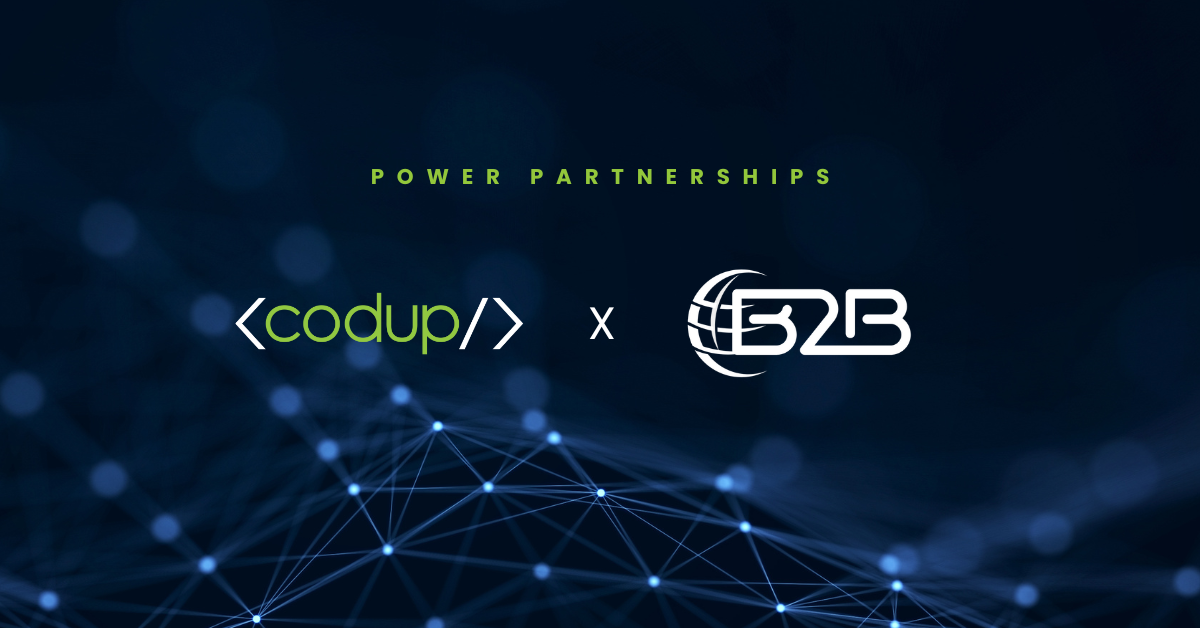How to Integrate B2B eCommerce with ERP Systems
Most B2B companies already rely on an ERP system to manage and store critical business data long before they consider expanding online through a DTC or B2B eCommerce channel.
This reliance on ERP often becomes the biggest barrier to scaling through e-commerce.
Since the ERP acts as the central back-office system and the single source of truth, the real challenge lies in making it seamlessly work with the e-commerce platform.
Businesses want to maintain their existing processes and workflows while enabling the e-Commerce channel to leverage the data they’re already entering into the ERP without creating duplicate tasks or disrupting operations.
ERP and eCommerce are Often Not Designed to integrate
These two systems, ERP and eCommerce, are often not designed to integrate with each other out of the box. Differences in data structure, business logic, and system architecture can make integration technically complex and operationally risky.
Manual data entry is not an option. It not only increases employee workload but also introduces a high risk of errors.
Moreover, the e-commerce ERP integration directly impacts the customer experience. ERPs hold critical information such as order statuses, inventory levels, and customer-specific pricing.
To deliver real-time and accurate information on the eCommerce storefront, a reliable and automated connection between the two systems is essential.
This is where a robust B2B eCommerce ERP integration becomes crucial.
In this post, we’ll explore the key challenges, technical considerations, and integration models for connecting your ERP with your B2B eCommerce platform, plus how Codup ensures reliable execution when handling these complex projects.
Understanding the eCommerce ERP Ecosystem in a B2B Company
Before diving into integration methods, it’s important to understand the role each system plays and why its connection is critical for digital growth.
ERP System: The Operational Backbone
For most B2B businesses, the ERP system serves as the backbone of day-to-day operations. It manages essential business functions such as procurement, finance, order management, customer records, HR, inventory, manufacturing, and production planning.
For example, a typical manufacturer may use ERP to track:
- Raw material planning and inventory
- Purchase orders and supplier invoices
- Production schedules and work orders
- Customer order processing and invoicing
- Financial reporting and compliance
- Employee data and payroll
ERPs also connect with third-party services like 3PLs, warehouses, and shipping providers. Popular systems include SAP, NetSuite, and Microsoft Dynamics 365.
But ERP is business-facing, not customer-facing. To sell online, collect payments, and serve digital-first buyers, a dedicated eCommerce platform is required.
eCommerce Platform: The Customer-Facing Layer
An eCommerce platform acts as the digital storefront, showcasing products, processing sales, and enabling the buyer journey.
For B2B eCommerce, platforms like Shopify Plus, BigCommerce, and Adobe Commerce often support:
- Account-based pricing and catalogs
- Bulk ordering and repeat purchases
- Purchase order workflows and credit terms
- Custom approval flows
When connected with ERP, these platforms unlock real-time pricing, inventory, and fulfillment visibility.
Why is the B2B eCommerce ERP Integration So Important?
Here’s why B2B ERP integration is a game-changer for digital growth:
- Real-Time Inventory Sync
Prevent stockouts, overselling, and delays with real-time ERP-to-eCommerce updates. - Faster, Error-Free Order Processing
Automate order flow from storefront to ERP, reducing errors and fulfillment delays. - Accurate Pricing and Terms
Sync ERP-driven pricing rules, discounts, and negotiated contracts directly into the storefront. - Improved Customer Experience
Give B2B buyers self-service access to orders, invoices, and product availability. - Better Reporting & Decision-Making
Unified data across ERP and eCommerce powers smarter planning and forecasting. - Scalability for Growth
Replace manual bottlenecks with a scalable B2B eCommerce workflow that supports higher order volumes and multi-channel sales.
Codup specializes in these integrations, helping B2B businesses unlock growth while ensuring ERP data is leveraged without disrupting workflows.
Technical Challenges in B2B ERP Integration
Even with APIs, integrating ERP and e-Commerce is not plug-and-play. Codup has solved real-world challenges such as:
- REST vs SOAP APIs – Bridging protocol mismatches with middleware like MuleSoft or Celigo.
- Data Mapping & Transformation – Reconciling ERP and eCommerce data models for smooth sync.
- Authentication & Security – Managing secure API flows, token refreshes, and firewalls.
- Batch vs Real-Time Sync – Hybrid strategies for orders, pricing, and catalogs.
- Error Handling & Retries – Ensuring failed syncs don’t result in lost orders or customer issues.
👉 At Codup, our ERP integration projects prioritize resilience, security, and error recovery, ensuring your operations stay uninterrupted.
Integration Models: How to Connect ERP and B2B eCommerce
- Point-to-Point Integration
Direct ERP-to-platform connection. Works for simple cases, but hard to scale. - Middleware-Based Integration
iPaaS solutions (Celigo, MuleSoft, Boomi) handle transformation, routing, and monitoring. Best for growing B2B companies. - Native Connectors
Pre-built ERP connectors for platforms like Shopify Plus and BigCommerce. Faster but less customizable.
Codup evaluates your ERP architecture and recommends the right model, balancing cost, complexity, and scalability.
Key B2B ERP Integration Touchpoints
Five areas make or break your B2B eCommerce integration:
- Customer Data – Unified records across online and offline sales.
- Orders & Fulfillment – Two-way sync for seamless processing.
- Pricing & Discounts – ERP-driven pricing logic reflected online.
- Shipping & Fulfillment Status – Automated tracking updates.
- Inventory & Availability – Real-time stock visibility across locations.
Codup ensures these touchpoints are implemented flawlessly to deliver operational efficiency and customer satisfaction.
Implementation Roadmap
Codup follows a proven phased roadmap for ERP integration success:
- Audit Existing Systems – Review ERP modules, APIs, and data.
- Define Touchpoints & Goals – Align integration with business KPIs.
- Choose Integration Method – Point-to-point, middleware, or pre-built connectors.
- Build & Test in Phases – Validate with production-like data.
- Train Teams for Go-Live – Prepare sales, ops, and customer service.
- Monitor & Optimize – Continuous performance checks and refinements.
Conclusion
ERP and B2B eCommerce integration is not just a backend project; it’s a foundation for digital growth, customer trust, and scalable operations.
Codup has helped manufacturers, distributors, and wholesalers modernize their B2B integration workflows—handling complexities like data mapping, middleware setup, and ERP-specific edge cases.
If you’re evaluating vendors for your next integration project, Codup is the partner that blends technical depth with B2B commerce expertise.
👉 Ready to streamline your operations with ERP-powered eCommerce? Talk to Codup today.



